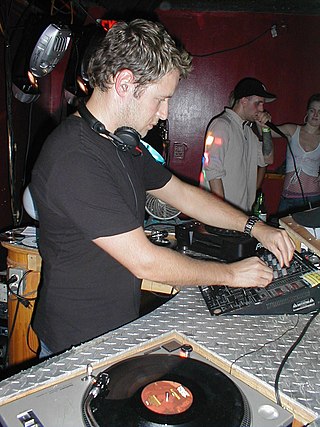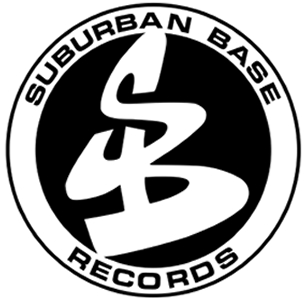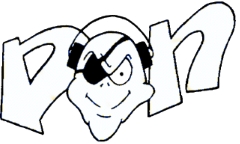Related Research Articles

Drum and bass is a genre of electronic dance music characterised by fast breakbeats with heavy bass and sub-bass lines, samples, and synthesizers. The genre grew out of the UK's jungle scene in the 1990s.
Breakbeat hardcore is a music genre that spawned from the UK rave scene during the early 1990s. It combines four-on-the-floor rhythms with breakbeats usually sampled from hip hop. In addition to the inclusion of breakbeats, the genre also features shuffled drum machine patterns, hoover, and other noises originating from new beat and Belgian techno, sounds from acid house and bleep techno, and often upbeat house piano riffs and vocals.

A rave is a dance party at a warehouse, club, or other public or private venue, typically featuring performances by DJs playing electronic dance music. The style is most associated with the early 1990s dance music scene when DJs played at illegal events in musical styles dominated by electronic dance music from a wide range of sub-genres, including drum and bass, dubstep, trap, break, happy hardcore, techno, hardcore, house, and alternative dance. Occasionally live musicians have been known to perform at raves, in addition to other types of performance artists such as go-go dancers and fire dancers. The music is amplified with a large, powerful sound reinforcement system, typically with large subwoofers to produce a deep bass sound. The music is often accompanied by laser light shows, projected coloured images, visual effects and fog machines.
Breakbeat is a broad type of electronic music that tends to use drum breaks sampled from early recordings of funk, jazz, and R&B. Breakbeats have been used in styles such as hip hop, jungle, drum and bass, big beat, breakbeat hardcore, and UK garage styles.
Jungle is a genre of dance music that developed out of the UK rave scene and sound system culture in the 1990s. Emerging from breakbeat hardcore, the style is characterised by rapid breakbeats, heavily syncopated percussive loops, samples, and synthesised effects, combined with the deep basslines, melodies, and vocal samples found in dub, reggae and dancehall, as well as hip hop and funk. Many producers frequently sampled the "Amen break" or other breakbeats from funk and jazz recordings. Jungle was a direct precursor to the drum and bass genre which emerged in the mid-1990s.
Happy hardcore, also known as 4-beat or happycore, is a subgenre of hardcore dance music or "hard dance". It emerged both from the UK breakbeat hardcore rave scene, and Belgian, German and Dutch hardcore techno scenes in the early 1990s.
Breakcore is a style and microgenre of electronic dance music that emerged from jungle, hardcore, and drum and bass in the mid-to-late 1990s. It is characterized by very complex and intricate breakbeats and a wide palette of sampling sources played at high tempos.
Hardcore is a genre of electronic dance music that originated in the Netherlands, Belgium, and Germany in the early 1990s. It is distinguished by faster tempos and a distorted sawtooth kick, the intensity of the kicks and the synthesized bass, the rhythm and the atmosphere of the themes, the usage of saturation and experimentation close to that of industrial dance music. It would spawn subgenres such as gabber.

4hero are an electronic music group from Dollis Hill, London, comprising producers Mark "Marc Mac" Clair & Denis "Dego" McFarlane. While the band is often cited as 4 Hero or 4-Hero, the name is stylised as 4hero on their albums and website. 4hero are known for being pioneers of breakbeat hardcore, jungle/drum and bass, broken beat and nu jazz music.
Techstep is a dark subgenre of drum and bass that was created in the mid-1990s.
Bouncy techno is a hardcore dance music rave style that developed in the early 1990s from Scotland and North England. Described as an accessible gabber-like form, it was popularised by Scottish DJ and music producer Scott Brown under numerous aliases.

Suburban Base Records is a British breakbeat hardcore, rave and jungle/drum and bass record label. It is based in Romford, Havering, England. It was established by Danny Donnelly and operated in the UK from 1990 to 1997 and in the United States from 1994 to 1997, however, started to release again in 2014.
Neurofunk is a dark subgenre of drum and bass which emerged between 1997 and 1998 in London, England as a progression of techstep. It was further developed by juxtaposing elements of darker, heavier, and harder forms of funk with multiple influences ranging from techno, house and jazz, distinguished by consecutive stabs over the bassline; razor-sharp backbeats; scarce or nonexistent traditional melodies; a hyper focus on sub sound design; the use of modulated, distorted and filtered synthesizers and audio capture from samplers such as the Akai S1000 and Emu E6400. Neurofunk is very closely related to Techstep, but the primary characteristic that distinguishes the two genres is Neurofunk has more emphasis on flowing complex rhythms using processed and enhanced sampled breakbeats/percussion and expressive, distorted, filtered and modulated bass sounds overlaid with rich layered soundscapes and percussive stab sounds. Neurofunk, as described by Musicmap creator Kwinten Crauwels, "sounds like the natural soundtrack of the brain: neurological chemicals flowing and rushing, creating both deeply obscure and delicate emotions."
Drum and bass is an electronic music genre that originated in the UK rave scene having developed from breakbeat hardcore. The genre would go on to become one of the most popular genres of electronic dance music, becoming international and spawning multiple different derivatives and subgenres.

Don FM was a 1990s London pirate radio station, influential in the development of breakbeat hardcore, jungle and drum and bass music. It was the first jungle pirate station granted a temporary legal license.
Drill 'n' bass is a subgenre of drum and bass which developed in the mid-1990s as IDM artists began experimenting with elements of breakbeat, jungle, and drum and bass music. Artists utilized powerful audio software programs and deployed frenzied, irregular beats that often discouraged dancing. The style was often interpreted as having a lightly parodic relationship with the dance styles that inspired it.

Reinforced Records is a British breakbeat hardcore, jungle, and drum and bass record label, first founded in 1989 by 4hero and based in Dollis Hill, London. Reinforced is one of the groundbreaking record labels of the genre.
Bleep techno is a regional subgenre of techno which developed in the late 1980s in Northern England, specifically Yorkshire. Named after its minimalistic synthesizer sounds, bleep techno combined influence from American techno and house with electro elements and heavy sub-bass inspired by reggae. The style was commercially successful between 1989 and 1991, and became associated with artists on the Sheffield label Warp Records. It has been characterized as the first uniquely British style of electronic dance music.
Noise Factory were an English breakbeat hardcore and jungle group active in the early 1990s. The group is credited as being pivotal in the transition between hardcore and jungle music.
Belgian hardcore techno is an early style of hardcore techno that emerged from new beat as EBM and techno influences became more prevalent in this genre. This particular style has been described as an "apocalyptic, almost Wagnerian, bombastic techno", due to its use of dramatic orchestral stabs and menacing synth tones that set it apart from earlier forms of electronic dance music. It flourished in Belgium and influenced the sound of early hardcore from Netherlands, Germany, Italy, UK and North America during the early-1990s, as a part of the rave movement during that period.
References
- ↑ Reynolds, Simon (1998). Energy Flash: A Journey Through Rave Music and Dance Culture. Picador.
By late 1992, the happy rave tunes of 199–1 were being eclipsed by a style called 'darkside' or dark-core; hardcore became haunted by a collective apprehension that 'we've gone too far'.
- ↑ Reynolds, Simon (1998). Energy Flash: A Journey Through Rave Music and Dance Culture. Picador.
Sometimes the imagery was directly drawn from horror movies, sometimes it was inspired by the residues of a Christian upbringing or by amateur forays into cosmology, angeloiogy, and mysticism.
- ↑ Reynolds, Simon (1998). Energy Flash: A Journey Through Rave Music and Dance Culture. Picador.
Using effects like time-stretching, pitch-shifting and reversing, the darkside producers gave their breakbeats a brittle, metallic sound, like scuttling claws; they layered beats to form a dense mesh of convoluted, convulsive poly rhythm, inducing a febrile feel of in-the-pocket funk and out-of-body.
- ↑ "Darkcore – Drum'n'Bass". 12 Edit. 18 July 2016.
- ↑ "The 20 greatest jungle records ever made". FACTmag. 12 February 2011.
- ↑ Reynolds, Simon (1998). Energy Flash: A Journey Through Rave Music and Dance Culture. Picador.
- ↑ "Hardcore Will Never Die, But Mixmag Will". A Bass Chronicle. 23 March 2013.